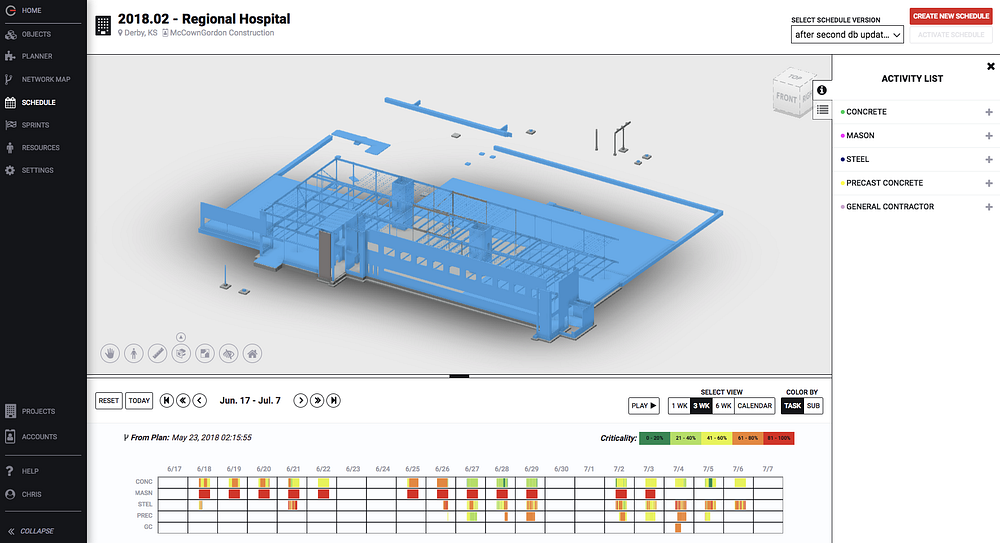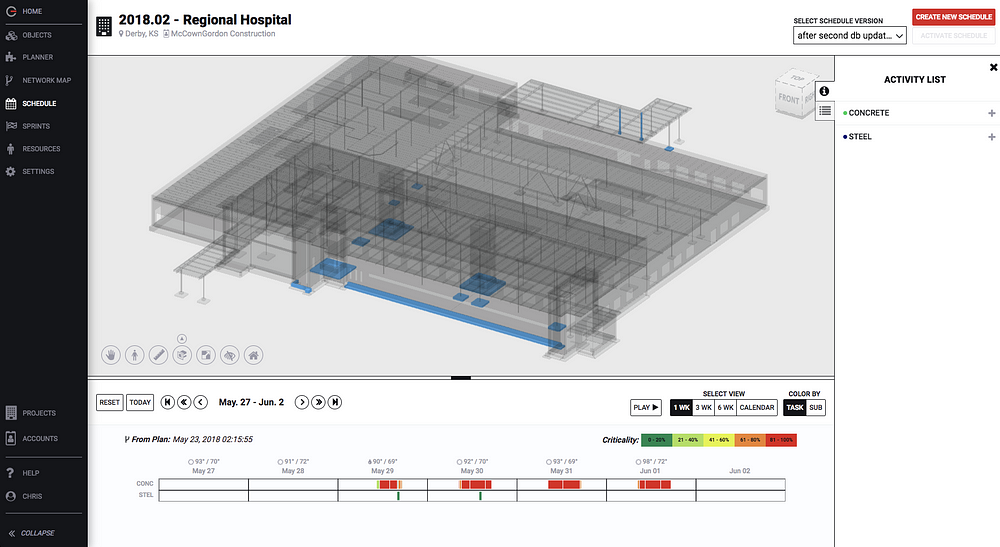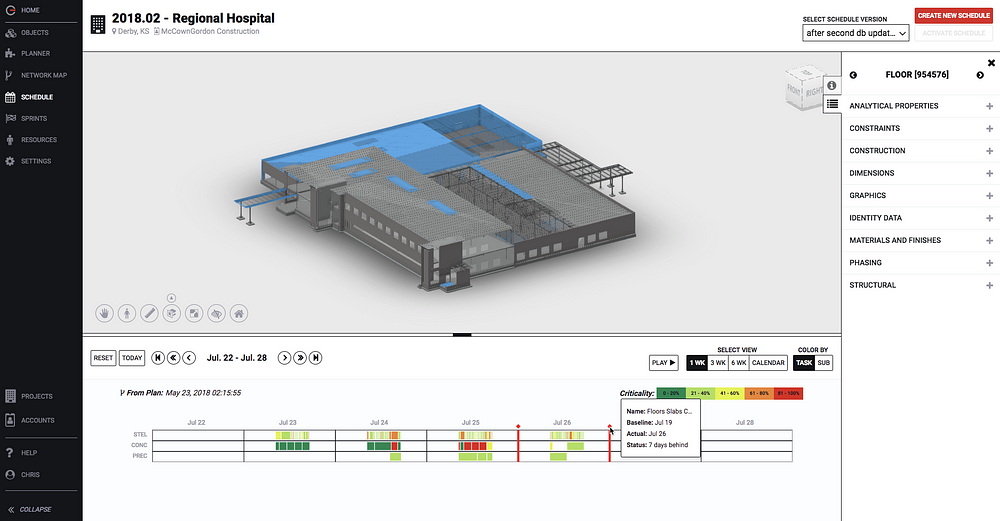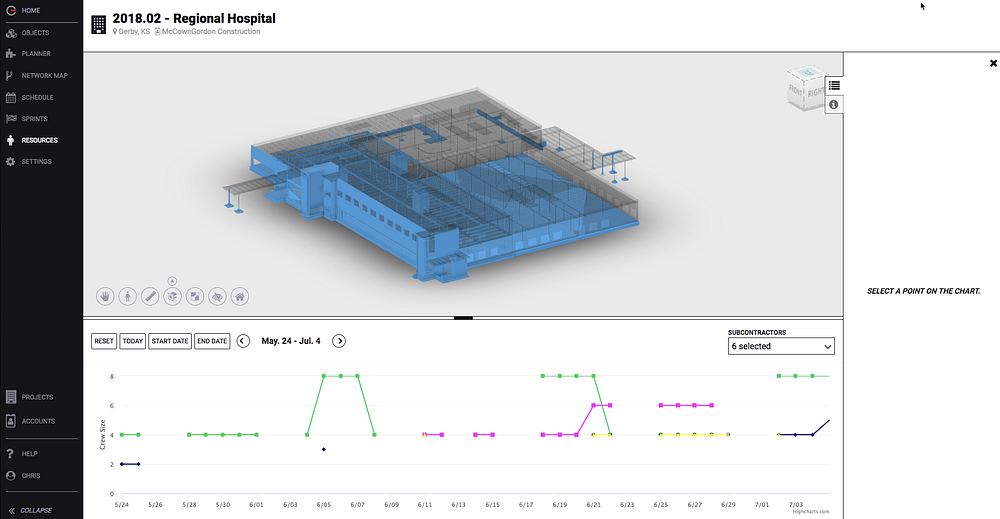It has only been 6 weeks since our 1.0 release, but we are excited to announce many new features originating from both our internal product roadmap and through our client interactions.

Unmodeled Activities
One of the major concerns since the beginning of Grit has been the understanding that there are activities that need to be included in the schedule that do not reference model objects. This release handles activities such as fencing, an activity that is unlikely to be modelled. Even though the visualization power is minimized, this feature was still very much needed.

Lead and Lag time for Activities
Not to be confused with Lead times associated with Procurement activities, we have attached pre and post durations that are necessary for certain activities. These only refer to production activities such as a cure period for concrete that must pass before forms are stripped. These puts buffers between an activity and any prerequisites/successors to allow for these scenarios.
…
Creation of Sprints page
Continuing our mission to introduce Agile Project Management to Construction, we have introduced the concept of Sprints. Contractors will generally use Sprints to fit into their current Weekly Coordination meetings. A Sprint will be created (i.e. “Week 53 — Mar 3 — Mar 10”) and during weekly meetings, subcontractors will commit to tasks that they plan to complete during the Sprint’s timeframe. Once the General Contractor starts the Sprint, Activities cannot be pulled out. Throughout the Sprint, Activities are moved across a Kanban board to show status of “In Progress” and “Complete”. At the end of the timeframe, GCs will end the Sprint. Any Activities that are left in “Committed” or “In Progress” will require the responsible subcontractor to respond with reasoning such as insufficient labor or weather. This process allows the automatic calculation of Percent Plan Complete with Reason Analysis.

Enhanced Schedule Page
The Schedule not has short cuts for 3 and 6-week look-aheads. This will be used as a quick visualization for make-ready activities that remove constraints for installation. A Calendar view, similar to that of Outlook or Google Calendar, makes it easy to understand which trades are active on the project site any given day of the schedule.

Weather Forecast embedded in Schedule
We have added a 7-day forecast to our 1 Week look-aheads to assist contractors in viewing planned activity on the project as it relates to the anticipated weather conditions.

In efforts to make the application even easier to use, we have made filtering possible by Activity Type (MasterFormat), subcontractor, or by the Category passed in from the BIM authoring tool (i.e. Revit).
…
Oculus Go

Milestones— Baseline and Tracking
One of our most recommended features was allowing the import of an existing schedule to use as a baseline. We have created a CSV file import tool that will bring in milestone level activities. Once imported, users will select the correspond activities that make up the milestone. When the last activity of a given milestone is shown on the schedule, a diamond appears showing its completion. When hovering over the diamond, the tooltip will provide tracking information showing how the actual milestone completion compares to the imported/planned baseline milestone.

The system allocates resources to activities throughout the project with a typical availability in mind. When it comes to crew size, we know that certain activities will require more than the typical to complete. This page is to show manpower requirements as they adjust throughout the project.

Schedule Versioning
As the project progresses, the General Contractor will be able to generate new schedule as new data comes into the system without affecting the Active Schedule that the project team is working from. Once the GC team determines a new schedule is optimal, they can select a new version and set it to be the Active Schedule.
There are many other features, bug fixes, and UX/UI enhancements included with this release.
I have to commend not only our team here at Grit Virtual but also our partners Key Construction, McCownGordon Construction and Skender Construction on their feedback that helped lead to these updates.
